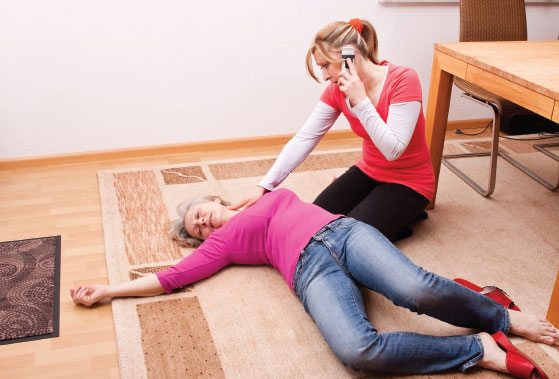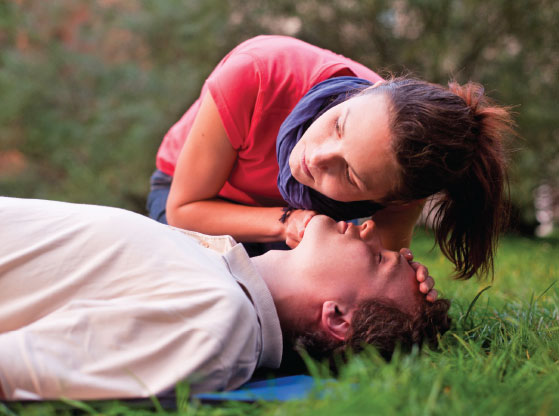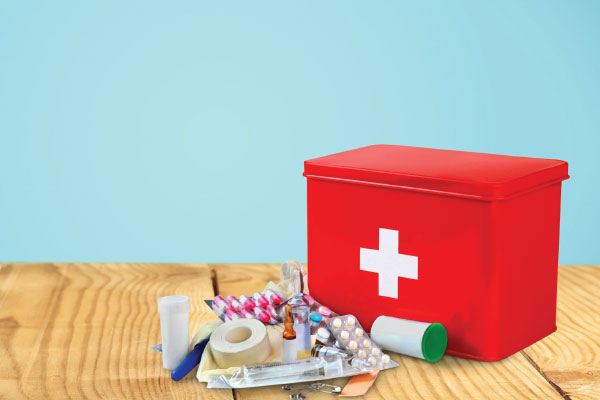It’s a regular day at home, work, school, playing sport or driving. But in the eventuality of a situation that endangers your own, or someone else’s, life what’s the course of action, Behnaz Sanjana ponders.
Accidents and medical mishaps don’t always happen to ‘other people’. Are you equipped to effectively deal with emergency situations?
Founder of the First Aid Box in Bahrain, Pamela Kamal, is an authority on all things first aid. She has been a registered nurse and midwife, as well as a first aid instructor and reflexologist. She gives us pointers on how we can make a difference to someone in medical need by knowing simple techniques, and outlines why everyone should be familiar with the basics.
Pamela says: “The average time it takes an ambulance to arrive at the scene of a medical emergency can be around eight minutes, but in reality, it could well be 20 minutes at a busy time of day. Quickly responding to a medical emergency can make the difference between life and death. Take, for example, someone choking on their food in a restaurant, a child pulled out of the swimming pool not breathing, a family member collapsing, unresponsive. There’s no time to refer to a first aid manual or wait for an ambulance – a blocked airway can kill in three to four minutes. Brain and organ damage can occur at any point in those four minutes. Simply knowing the right thing to do in such situations gives the patient a fighting chance.”

Road accidents are not uncommon in Bahrain, and onlookers who are willing to help fear that they may do the wrong thing, causing further injury to a casualty, or be harmed themselves. These reactions can often result in delayed aid or the quality of the treatment being compromised.
Pamela gives us some basic first aid tips to keep in mind for emergencies (although she states that these are not a substitute for equipping yourself with a proper training course).
When someone is unresponsive and not breathing
Deliver chest compressions
1. Check breathing by tilting their head backwards, and looking and feeling
for breaths.
2. Push firmly downwards in the middle of the chest and then release.
3. Push at a regular rate until help arrives.
If the person is breathing, simply move them onto their side and tilt their head back before you call emergency services.
Choking
Deliver back blows
1. Hit them firmly on their back between the shoulder blades to dislodge the object.
Drowning
Deliver breaths and chest compressions
1. Once the person is on dry land, check breathing by tilting their head backwards and looking and feeling
for breaths.
2. If they are unresponsive and not breathing give five initial rescue breaths.
3. Push firmly downward in the middle of the chest and then release.
4. Continue with two rescue breaths then 30 chest compressions until help arrives or they become responsive.
Severe Bleeding
Put pressure on the wound
1. Put pressure on the wound with whatever is available to stop or slow down the flow of blood.
2. Keep pressure on the wound until
help arrives.
Burns
Cool the affected area
1. Cool the burn under cool running water for at least ten minutes.
2. Loosely cover the burn with cling film or a clean plastic bag.
Fractures
Immobilise the affected part
1. Encourage the person to support the injury with their hand, or use a cushion or items of clothing to prevent unnecessary movement.
2. Continue supporting the injury until help arrives.
Heart Attack
Ensure they are sitting and call 999 immediately
1. The person may have persistent, vice-like chest pain, which may spread to their arms, neck, jaw, back or stomach. Call 999/112 immediately.
2. Make sure the person is in a position that is comfortable for them (on the floor, leaning against a wall or chair).
3. Give them constant reassurance while waiting for the ambulance.
Stroke
Carry out the FAST test
1. Think FAST. Face: is there weakness on one side of the face? Arms: can they raise both arms? Speech: is their speech easily understood? Time: to call 999.
2. Immediately call 999/112.
Heatstroke
Remove from heat and cool down
1. Symptoms are hot dry skin, headache and confusion.
2. Quickly move them to a cool place and remove outer clothing.
3. Wrap them in a cold, wet sheet and keep pouring cold water over or
fan/sponge down with cold water to keep cool.
Road Accident
Assess/make safe/get help/ give first aid
1. Park safely and put hazard-warning lights on. Consider road safety and look out for dangers such as traffic, leaking petrol and broken glass.
2. Immediately call 999/112.
3. If there is more than one injured person, check on the quiet ones first – they may be unconscious and need immediate attention.
4. Control bleeding with whatever is available, for example, a T-shirt. Keep pressure on the wound until help arrives.
In all circumstances, call 999/112 to summon help as soon as possible.

It is imperative to have an easily accessible first aid kit at home, work and when you travel, to help you to help others.
Contents of a basic first aid box:
1. An easily identifiable watertight first aid container
2. Antiseptic wipes / solution and cream
3. Sterile gauze dressings
4. Adhesive dressings and tape
5. Triangular bandages and crepe roll bandages
6. Sterile eye pads
7. Painkillers such as paracetamol or ibuprofen (for children and adults) and antihistamines
7. Cotton, scissors, tweezers, disposable gloves, thermometer and safety pins.





































